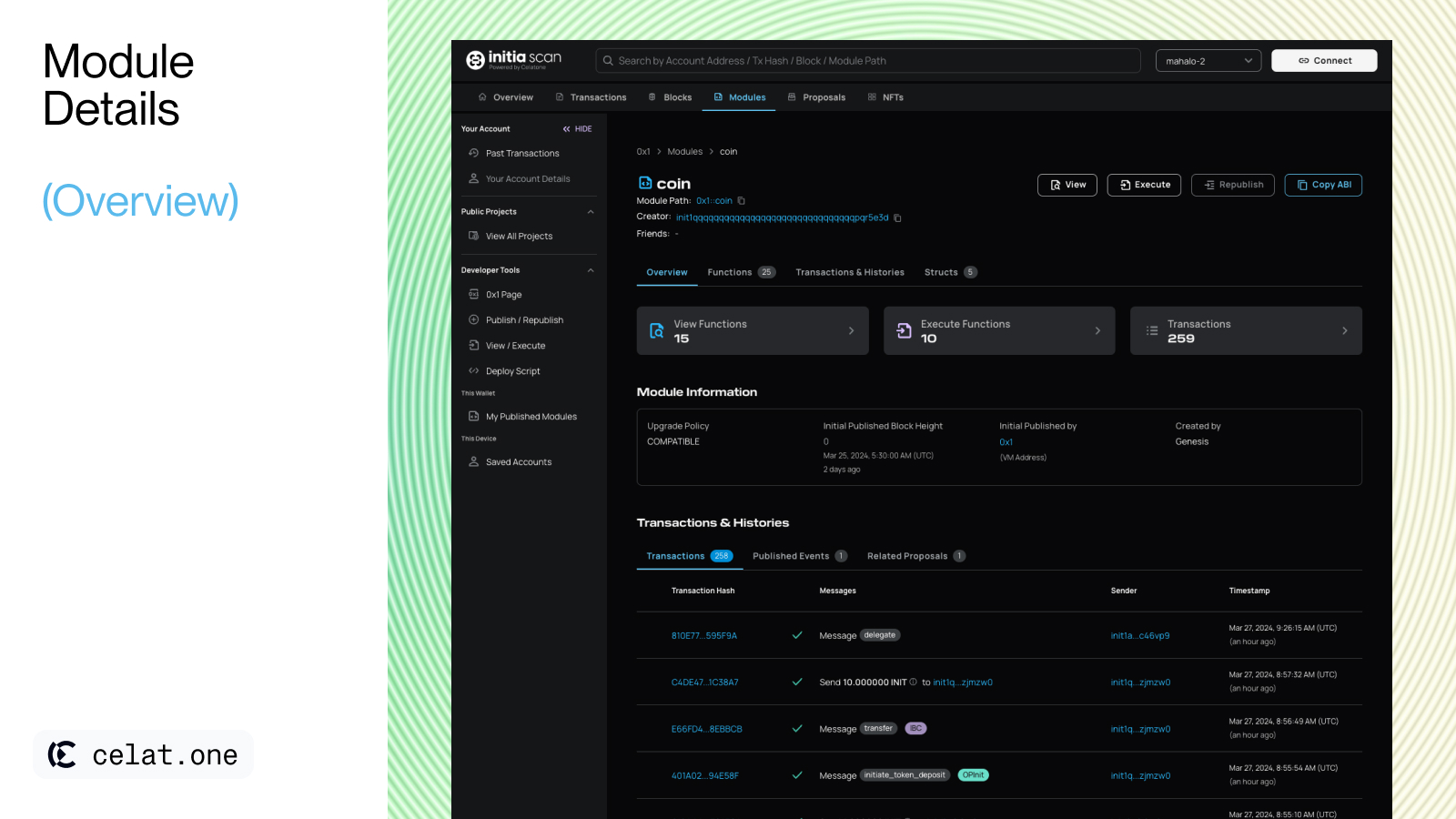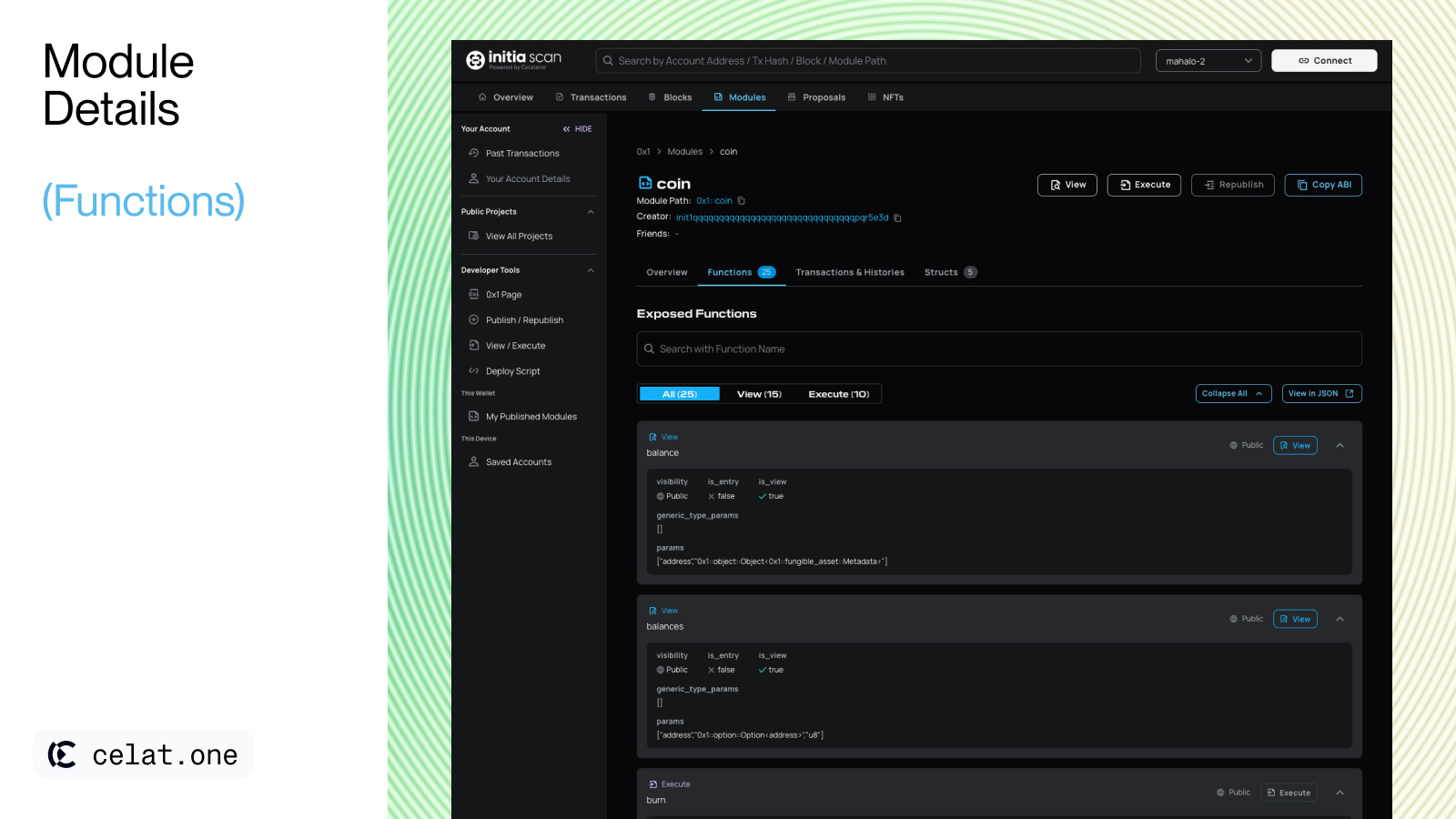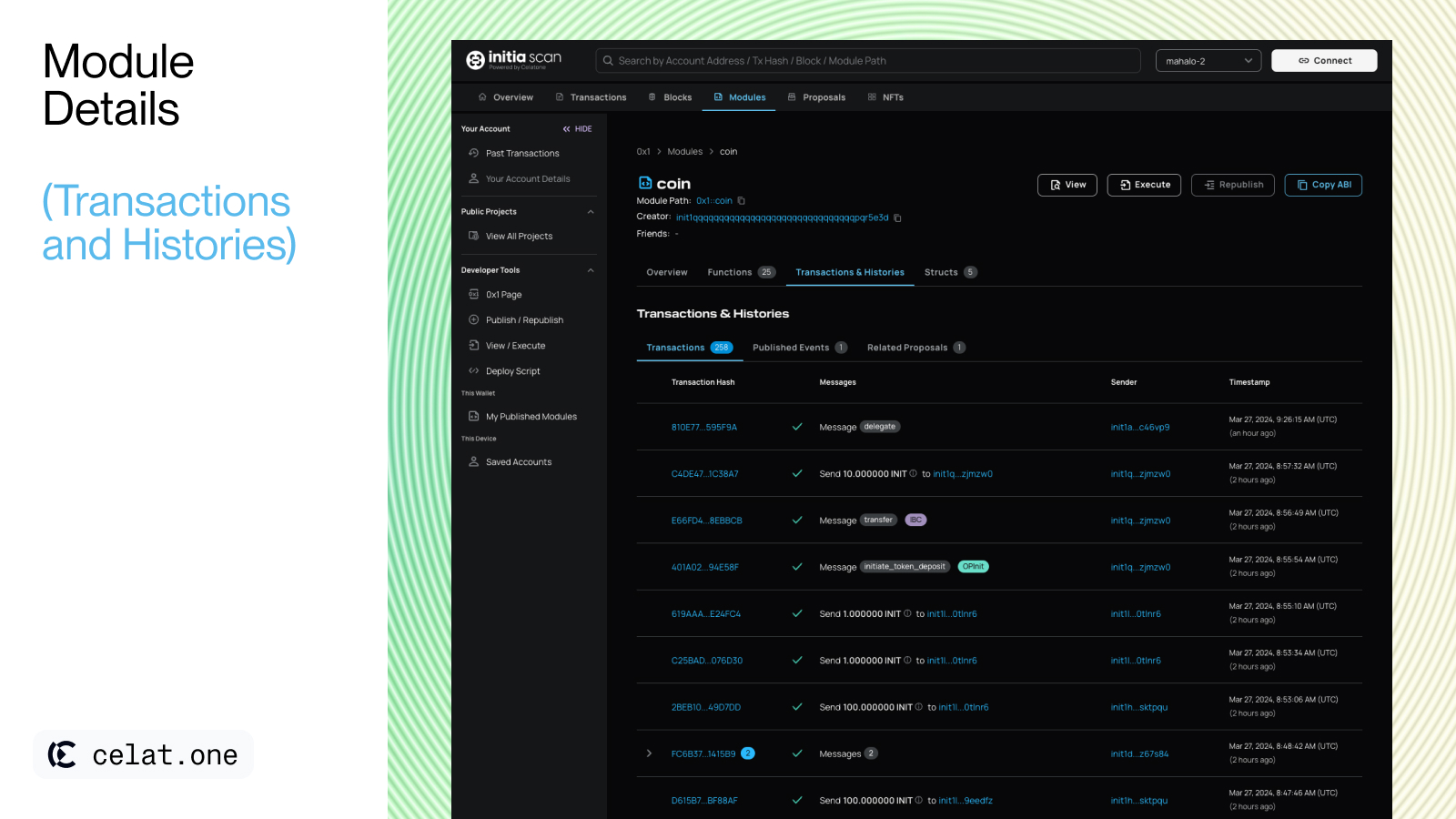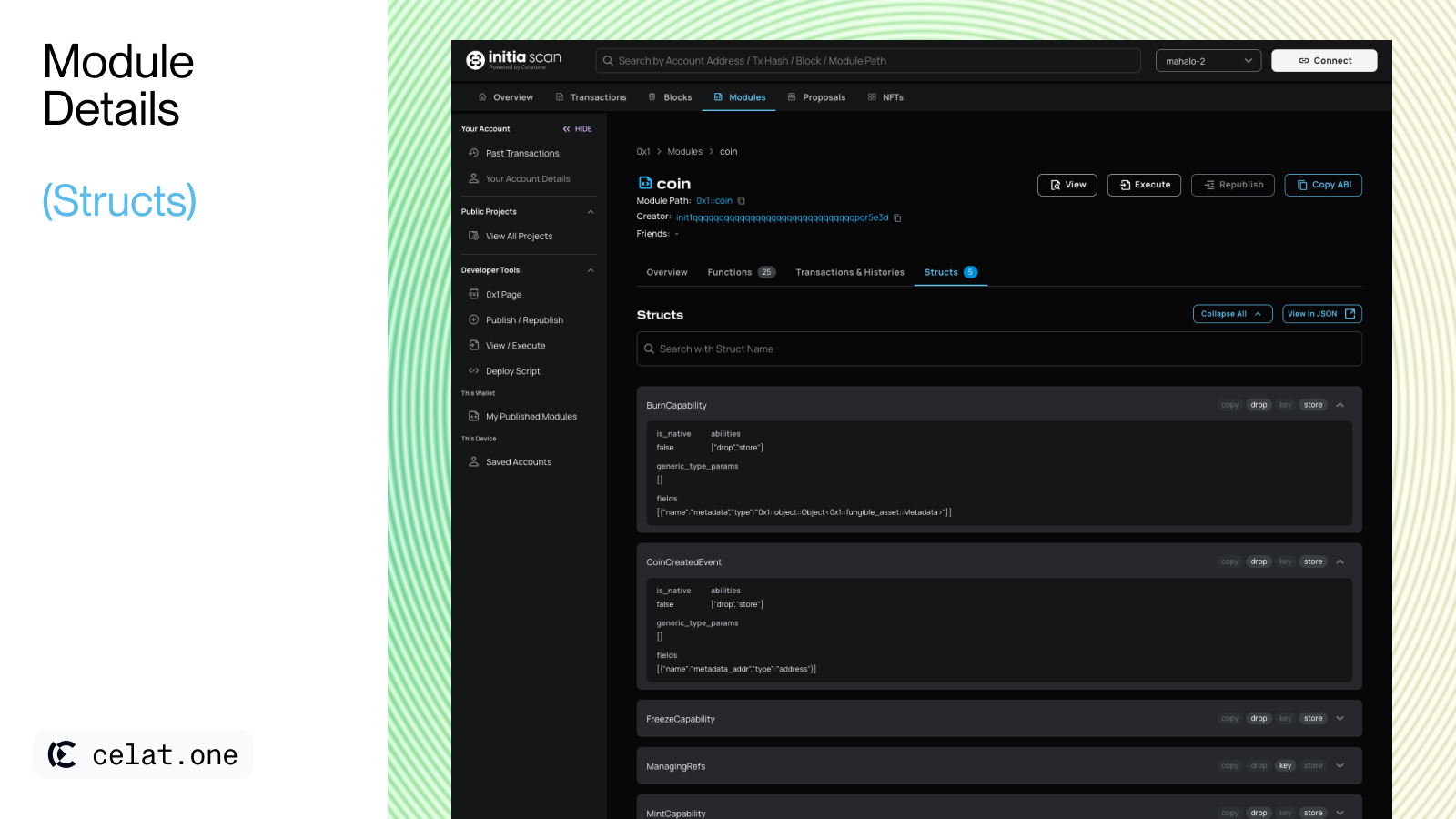Skip to main contentThe “Module Details” page in Celatone provides comprehensive information about a specific Move module. It includes:
- Module Name: The top of the page lists the module’s name
- Module Path: A module path in Move uniquely identifies a module on the blockchain, consisting of the account address where the module is published and the module’s name, formatted as
account_address::name
- Creator: Display the account address who published the module
- Friends: Lists other modules explicitly declared as “friends” within this module, granting them access to certain functions or resources not public.
- Call-to-action options: Enabling users to view, execute, or copy the module’s ABI with ease. Users can also republish the module if it was originally published by them.
Overview
This section contain a shortcuts to see view and execute functions, module information, and transaction & histories details.
- Shortcuts: Enables users to quickly see the total number of view and execute functions, as well as transactions, allowing for faster access.
- Module Information
- Upgrade Policy: Describes the rules or conditions under which the module can be upgraded.
- Initial Published Block Height: Indicates the blockchain height at which the module was first published.
- Initial Published by: Shows the account address of the initial publisher.
- Depending on the module’s creation context, one of the following will be displayed:
- Created by: For modules originating from the genesis block, this will be displayed as “Created by Genesis.”
- Initial Published Transaction: For modules created post-genesis through normal processes, it will show the transaction details.
- Initial Published Proposal ID: For modules initiated through a proposal, this will the corresponding proposal ID.
- Transactions & Histories: A log of all transactions involving the module, including published events and related proposals. More information on “Transaction & Histories” section
Functions
The “Exposed Functions” section in the interface provides a streamlined overview of a module’s available functions, detailing:
- Function Categories: This filter allows users to filter through all available functions or narrow down to view only “View” or “Execute” functions, with the total count of each displayed for convenience.
- Search Bar: A search bar allows users to quickly find functions by name.
- Quick Actions: Users can expand/collapse all function details for a compact view or expand them to see full details all at once.
- Function Details: Each function listed under this section can be expanded to reveal specific attributes such as visibility, function’s parameters and generic type parameter. Learn more about functions in Initia Docs.
- View in JSON: An option for users to view the function details in JSON format, useful for developers needing a structured representation.
Transactions & Histories
Transactions
The “Transactions” details all the transactions related to the module. Users can view:
- Transaction Hash: Unique identifiers for each transaction.
- Messages: Descriptions of the transaction purpose, such as module publishing or policy upgrades
- Sender: The wallet that initiated the transaction.
- Timestamp: Exact date and time when the transaction was confirmed on the blockchain.
Published Events
This section tracks the history and significant events related to the module, allowing users to observe:
- Remarks: Provides context on events, like transaction hash or proposal ID
- Published Events: Lists important occurrences, like changes to the module’s upgrade policy.
- Block Height: The blockchain height at which the event took place.
- Timestamp: Exact date and time when the event was confirmed on the blockchain.
If the module was initiated by a proposal, has undergone updates via governance, or is referenced in any proposals, such related proposals will be listed in this section.
Structs
The “Structs” section offers an organized view of the data structures defined within a module:
- Search Bar: Users can look up structs by their names for quick access.
- Quick Actions: Users can expand/collapse all struct details for a compact view or expand them to see full details all at once.
- Struct Details: Each struct listed under this section can be expanded to reveal specific info such as abilities, fields and generic type parameter. Learn more about structs in Initia Docs.
- View in JSON: An option for users to view all structs in JSON format, useful for developers needing a structured representation.





